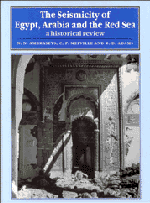4 - Conclusions
Published online by Cambridge University Press: 18 December 2009
Summary
In this chapter we review the evidence that we have assembled for the long-term seismicity of the region. The occurrence of earthquakes in time and space is not necessarily constant, but some variations in the record will undoubtedly be the product of changes in the circumstances in which events were reported, rather than of changes in seismic activity itself. The chance of an earthquake being reported in historical sources, or recorded by instruments, depends partly on where chronicles were written, or where seismographs were located, in relation to where the earthquake originated. It also partly depends on the size of the event. The coverage naturally varies at different periods and for different areas. Chroniclers tend to be subjective and may have no interest in reporting even the most destructive shocks. Documentary sources are far less sensitive than purpose-built instruments, but in their own way they can quite subtly reflect the level and rate of seismic activity affecting the society whose history they record.
In an area of high seismicity, where large and destructive earthquakes are frequent, it is likely that only the most severe will be reported in sufficient detail to indicate their size. In an area of relatively low seismicity, the threshold at which events are perceived and reported is correpondingly lower, and it is possible to distinguish small earthquakes that cause little or no damage. In such regions, we would expect the rarer, large event to be well documented, always assuming it affected a populated area.
- Type
- Chapter
- Information
- The Seismicity of Egypt, Arabia and the Red SeaA Historical Review, pp. 145 - 160Publisher: Cambridge University PressPrint publication year: 1994



